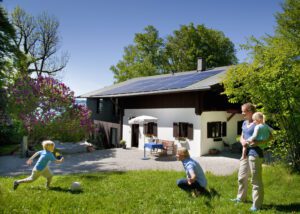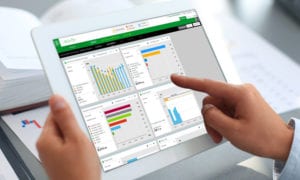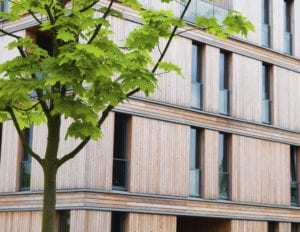Today, we are spending more time at home amid ongoing social restrictions, colder weather and increased home-working. This is leading many of us to re-evaluate our housing conditions: to enjoy more outdoor space or to move to a quieter neighbourhood. We’ve also witnessed a temporary resurgence in wildlife and urban neighbourhoods have enjoyed cleaner air than they have for decades, giving us a glimpse of what the future could look like if we transition to cleaner energy and promote biodiversity.
However, there is a growing challenge linked directly to our dwellings. Residential housing is set to become the biggest consumer of electricity globally. In 2019, 34% of all CO2 emissions came from the residential sector. Today, we may be driving less, but we are working from home more, watching more TV, streaming more on Netflix, playing more video games and sending more Tweets.
In the near future, EV charging and the electrification of heat will see consumers’ electricity consumption increase two-fold by 2050. If the trajectory continues, we could see our energy bills soar by 70%, and the share of residential emissions rise even further. At the same time, many countries, including the UK, are committed to achieve net zero carbon emissions by 2050. It is clear that this goal isn’t attainable without the creation of net zero homes. Many wonder if that’s realistic over the course of our lifetime. But I believe it could be possible within the next decade.
Homes today are deeply inefficient. Despite the roll out of smart meters and systems that let us control heating and lighting from a smartphone app, we still understand very little about how our homes are operating. We receive a bill that tells us how much energy has been consumed, but we don’t know when, in which rooms, by which appliances or how efficiently. When you buy a car, you know how many miles to the gallon you can expect, or how far it should travel on an electric charge. We have no idea whether our homes are consuming or wasting more energy than expected which makes it impossible to manage.

Homes may be packed with smart devices, but they aren’t intelligent… yet
Smart home technology is nothing new. The vast majority of US and UK consumers now own a piece of smart home tech. We may have wireless speakers, intelligent assistants, climate control devices and video doorbells aplenty. But whilst this provides added convenience it isn’t revolutionising the way we live. And worse, currently, the additional energy required to power always-on, connected devices and the data centres that sit behind them is adding to our environmental footprint, rather than improving it.
Yet, every challenge is an opportunity. We can make our homes work harder for us by becoming truly intelligent and self-sufficient, satisfying the majority of their own energy needs. What’s more, our homes can command more value, and occupants can enjoy greater comfort – once renewable energy is incorporated in our energy sources, stored and managed, through intelligent smart meters or hubs that can drastically increase our awareness and control over our energy usage. Our homes can become not just more sustainable, but also resilient.
To do this we need to create more opportunities to collect data from our homes. Sensors either embedded or retro-fitted to appliances, and smart panels installed in our home electrical system are the first steps to collecting this data. Technology that has already been developed and deployed to create more intelligent commercial building management systems is now starting to be adapted for the home.
Connecting and integrating different smart devices can drive further benefits. By literally connecting all elements under one roof, homeowners can control every device easily through a single central app. This allows different systems to interplay with each other and be personalised to the occupants, making the home experience more comfortable than ever.
But the centralisation of building data also helps to drive hyper-efficiency and self-sustainability. With unprecedented visibility over energy habits – imagine a ‘fitbit for your home’ – consumers could far more easily understand and adjustment their energy usage to meet specific goals. If a central hub or app converts energy usage into carbon emissions occupants can start to see progress towards achieving a net zero home. As our homes become truly intelligent, a firm foundation for net zero homes will emerge.
We know that consumers want to make their homes more sustainable and energy efficient – but few people want to manage their energy use day to day. Artificial Intelligence (AI) and Machine Learning (ML) will be key to achieving the smart, sustainable home. AI powered by the date collected from connected devices in our homes, will learn and anticipate when, where and how much energy is required to efficiently light, heat, and power to meet occupants’ needs. Smart homes will be able to identify the best energy source to use at the right time to reduce cost. Thanks to AI-based predictions, consumers have the potential to reduce energy consumption and electrical heating costs by up to 50% without having to compromise on comfort.
The potential for new technologies isn’t restricted to smart consumption. Advances in solar technology will make it a feasible energy source for a wider range of residential homes and locales. Increasingly popular electric vehicles can also double up as energy storage systems as needed. The prosumer movement – where energy users generate their own power from renewable sources, which they can often sell back to the grid – has the opportunity to go mainstream, benefitting people and the planet.
We trust our homes to be safe – but how do we know they are truly secure?
With the use of more ‘green’ energy and increased electrification and digitisation of our homes comes another benefit: electrical safety. Today safety in our homes is typically associated with a secure front door, window locks, cameras and alarms. But many of us live in older homes. We have no idea of the state of our electrical wiring, and give little thought to whether it can withstand the predicted increase in our energy consumption?
What’s more, our digital connectivity and home security increasingly relies on the availability of uninterrupted power, redefining home safety. The resilient home of the future will be able to alert residents to the possibility of faults, corrosion or circuit overload that could compromise both their safety and security. Residents will be able to benefit from emergency back-up power to ensure critical systems continue running in an emergency – such as a power outage or damaged power lines – to ensure our homes remain self-sufficient, rain or shine.
The path to net zero homes
Our path to net zero homes is clear, with a smart ‘grid-to-plug’ energy management system at its core. The first generation of smart home products gave us room by room comfort control. Today, new technologies are delivering room by room energy insight, autonomous and smart consumption, as well as solar generation at the residential level. By helping people to better understand and control their energy, we move closer to a future of net zero homes – able to generate, intelligently manage, control, store and even resell energy for the greater good.
The technology already exists to fully realise the net zero home potential. Now it’s up to us to recognise the contribution we can make to achieve a sustainable future. The opportunity to make a difference is right on our doorstep.
- 3 critical steps to help Panel Builders grow their business through digital transformation
- What Can We Do To Stop Climate Change: Is Digital The Silver-Bullet We’re Looking For?
This article was originally published on Forbes.


